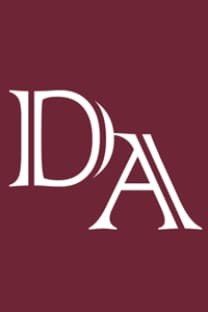Medrese Mezunları Krizi: Pakistan Toplumunda Kimlik Arayışı
THE CRISIS OF MADRASAH GRADUATES: A SEARCH FOR IDENTITY IN THE PAKISTANI SOCIETY
___
- Ahmad, M. (2009). Madrasa Reforms and Perspectives: Islamic Tertiary Education in Pakistan. In M. J. Nelson, & M. Ahmad, Islamic Education in Bangladesh and Pakistan: Trends in Tertiary Institutions. Washington: The National Bureau of Asian Research.
- Andrabi, T., Das, J., Khwaja, A. I., and Zajonc, T. (2006). Religious School Enrollment in Pakistan: A look at the data. Comparative Education Review, 50(3): 446-477.
- Bhattacharya, S. (2014, September 21). Madrasah Education in Pakistan: In the Context of Government Policy. Global Education Magazine, 32-36.
- Butt, T. M. (2012). Social and Political Role of Madrassa: Perspectives of Religious Leaders in Pakistan. South Asian Studies, 27(2): 387.
- Haqqani, H. (2002). Islam's Medieval Outposts. Foreign Policy, (133): 58-64.
- Hussain, S., Hussain, B., Asad, A. Z., ve Khan, W. (2014). Theoretical Analysis of Socio- Economic and Political Causes of Terrorism in Pakistan. Pakistan Journal of Criminology, 6(2): 53.
- Iqbal, A. R., ve Raza, S. (2015). Madrassah Reforms in Pakistan: A Historical Analysis. ISSRA Papers, 7(1): 27-50.
- Jonas, E., McGregor, I., Klackl, J., Agroskin, D., Fritsche, I., Holbrook, C., et al. (2014). Threat and defense: From anxiety to approach. In J. M. Olson & M. P. Zanna (Eds.), Advances in Experimental Social Psychology, Vol. 49: 219–286.
- Leitner, G. W. (2002). History of Indigenous Education in the Punjab: Since Annexation and in 1882. Lahore: Sang-e-Meel Publications.
- Moosa, E. (2015). What Is a Madrasa? University of North Carolina Press.
- Neyazi, T. A. (2002). Madrasah Education. Economic and Political Weekly, 3967-3968.
- Noor, F., Sikand, Y., and Van Bruinessen, M. (Eds.). (2008). The Madrasa in Asia: Political Activism and Transnational Linkages. Amsterdam: Amsterdam University Press.
- Sajjad, M. W. (2009). Madrasas in Pakistan: Thinking Beyond Terrorism-Based Reforms. Strategic Studies, 29(4).
- Singer, P. W. (2001). Pakistan's Madrassahs: Insuring a System of Education Not Jihad. Analysis Paper 14: 1-9
- Sindhu, H. A. (2017). Budget 2017-18: Minimum wage set at Rs 15,000 per month. Retrieved September 10, 2017, from https://en.dailypakistan.com.pk/pakistan/budget-2017-18- minimum-wage-increased-to-rs-15000/
- Talbani, Aziz. (1996). “Pedagogy, Power, and Discourse: Transformation of Islamic Education.” Comparative Education Review 40 (1): 66-82.
- Tajfel, H., and Turner, J. C. (1979). An Integrative theory of Intergroup Conflict. The Social Psychology of Intergroup Relations Monterey, Eds. W. G. Austin and S. Worchel CA: Brooks/Cole: 33–47.
- Zaman, M. Q. (1999). Religious Education and the Rhetoric of Reform: The Madrasah in British India and Pakistan. Comparative Studies in Society and History, 41(2): 294-323.
- Zaman, M. Q. (2010). The Ulama in Contemporary Islam: Custodians of Change. Princeton University Press.
- ISSN: 1301-966X
- Yayın Aralığı: 2
- Başlangıç: 1998
- Yayıncı: MOTİF YAYINCILIK
İSKENDER BEY İSYANLARININ DİNÎ BOYUTU VE PAPALIKLA İLİŞKİLERİ
ZEKÂTIN DEVLET ELİYLE YÖNETİLMESİ VE MALEZYA ZEKÂT SİSTEMİ ÖRNEĞİ
KADININ ÜCRET KARŞILIĞI ÇALIŞMASI KONUSUNDA DİN İŞLERİ YÜKSEK KURULU’NA GELEN SORULAR
Medrese Mezunları Krizi: Pakistan Toplumunda Kimlik Arayışı
Farid Bin MASOOD, Umair Ali KHAN
Çoğulcu Demokrasiye Geçiş Sürecinde Türkiye’de Din Eğitimi Alanındaki Gelişmeler
